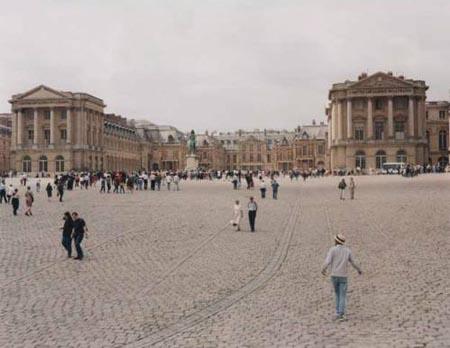Paris 2004

Prof. Jacques Herzog, Prof. Pierre de Meuron,
Emanuel Christ, John Palmesino, Simon Hartmann, Ann-Sofi Rönnskog
Exercise type: “P”
Locations: Group work in Basel and in Paris
Start: Tuesday, 19 October 2004, 10.15am at ETH Studio Basel, Spitalstrasse 12, 4056 Basel
How is Paris reshaping its centrality? What are the contemporary relations between power and urban change? What are the pressures on its rational urban order? How is Paris re-organizing its structures? What obstacles does it face? What are its potentials? Every city grows and takes shape in relation to its own specific scenario of menace that has emerged in the course of its history and forced it into an unmistakable and inescapable pattern. Cities are specific because they are confronted with specific threats and show a concrete, physical response to these threats. Cities are unfathomable, a trait that explains their distinctiveness and uniqueness. It also explains the difficulty of describing cities, making plans for them, or confining them to theories. How are cities developing, changing, and adapting their bodies and their physical configurations when they are connected to the international energy flows? How are they reconfiguring their specific physiognomy?
This semester, the research will focus on the urban transformation processes of Paris.
The perceptive, analytical, and representational instances of this city will be the starting and central point of our research, which will try to outline a “portrait of a contemporary city” from its physical configuration. This will be different from a traditional general urban description and will focus on the specific traits and individual characteristics of Paris. This portrait will render Paris’ contemporary processes of adaptation, change, revision, renovation, and transformation: a physiognomy of a moment within an evolutionary trajectory marked by centralization of power and rational order.
The core of the research activities of the institute is the detection of traces of urban change in the material space of the inhabited landscape. The researchers will engage the issues of contemporary urban condition by describing rigorously the modalities of physical transformation in different environments and contexts. The particular model introduced experimentally in the last years of work with the students in Basel – with no real separation between teaching, fieldwork, design, and research – will be at the center of this semester’s activity, which continues the new research on international cities.
ETH Studio Basel investigates regions that are ambiguous, being both embedded in the globalization process and on the edge of a possible crisis; places that maintain a spin, for they are connected to international energy flows that continue to evolve and change, without ever exploding or collapsing; regions that are partially obscured, and have an interesting, specific history.
A phenomenological reading of the urban condition of Paris is the starting point for a series of analyses that will render a deeper understanding of the contemporary city, its modalities of transformation, and the role of architecture and urbanism in the overall urbanization processes.
PEOPLE: PROF. JACQUES HERZOG, PROF. PIERRE DE MEURON, SIMON HARTMANN, JOHN PALMESINO, ANN-SOFI RÖNNSKOG, EMANUEL CHRIST

